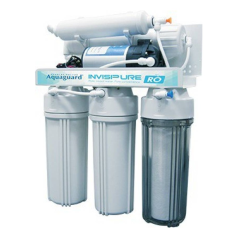

- IGRADE WATER MANAGEMENT SYSTEM FUNCTIONS ISO
- IGRADE WATER MANAGEMENT SYSTEM FUNCTIONS SERIES
The iGrade antenna resists signal interference, allowing for the rejection of error that can typically be caused by multipath effects. Vertical accuracy can be impacted by signal interference that the StarFire 3000 Receiver is susceptible to, such as multipath. The iGrade StarFire GNSS antenna (iGrade antenna) facilitates enhanced performance of the implement’s StarFire 3000 Receiver when utilized for iGrade that requires maximum vertical precision. The vertical accuracy performance of the StarFire 6000 with internal antenna for iGrade applications is similar to that of the StarFire 3000 with external iGrade antenna. The StarFire 6000 Receiver is not currently compatible with external antennas. The John Deere Application Controller 1100 is required for iGrade activation. IGrade requires the receiver to have an RTK signal level. iGrade does not support WAAS, EGNOS, SF1, SF2, or SF3 signal levels.
Compatible with integrated AutoTrac, AutoTrac Controller, and AutoTrac Universal. *When equipped with optional electronic SCVs. Any SCVs can be used and an option connector is not used. Compatible using John Deere proprietary SCV type. Running with John Deere legacy requires using SCVs 1 or 3 and connecting the UCC harness to the option connector at the rear of the tractor cab. Compatible using John Deere legacy SCV. Compatible using external selective control valve (SCV) and external SCV switch. IGRADE WATER MANAGEMENT SYSTEM FUNCTIONS SERIES
Non-John Deere tractors, 60 Series and older tractors, 5XXX, 6X00, 6X10, 6X30, 7X00, 7X10, and Small- Frame 7X20/7X30 Tractors. Already proven in a wide range of more than 100 successful customer projects globally, we are proud to be THE industry’s partner in creating a bright, safe automotive future.IGrade is approved for the following platforms: Supported by our global network of competence centers for System Safety and Cybersecurity, we can ensure that safety is considered throughout the development along the v-cycle. 
Throughout the development process, we ensure that safety standards are supported with thorough risk assessments, as defined by the FMEA, FTA and FMEDA. This means that with our products and services you are in compliance with currently required automotive safety and security regulations. We not only support the establishment of complete safety or security architectures for conventional and HEVs but also future technologies like BEVs, FCEVs and AD/ADAS technologies. Our system safety and cybersecurity engineering competencies are based on more than 20 years of experience in this area. AVL employees are members of the standard board.
ISO/SAE 21434 - Road Vehicles - Cybersecurity Engineering*. ISO/PAS 21448:2019 – Road Vehicles – Safety of intended functionality*. IGRADE WATER MANAGEMENT SYSTEM FUNCTIONS ISO
ISO 25119 – Tractors and machinery for agriculture and forestry. ISO 26262 – Road Vehicles – Functional Safety*. This is all carried out in compliance with: AVL CRETA – handle complex calibration projects and data managementĪs well as our engineering services and product portfolio, this offering also includes training and coaching related to functional safety and cybersecurity. AVL CONCERTO – the platform for next-level data processing. AVL MAESTRA – an integrated state-of-the-art model-based development platform. AVL FUSE – keep track of required safety activities in e.g. Dynamic projects require comprehensive tools for our customers but also for our engineers in their daily work: Liability, Compliance, Care and ResponsibilityĪVL provides a wide range of solutions within the whole functional safety lifecycle of processes and technical solutions, from concept right through to SOP. The ultimate goal is to improve the safety of vehicles. System safety and cybersecurity must be a design decision.Īt AVL, this consideration is built into all of our products and services. Indeed, the reduction of unacceptable risks must be designed into all products from the concept stage and onwards. Everyone in the automotive industry has the responsibility of considering human safety in the development of their products.






 0 kommentar(er)
0 kommentar(er)
